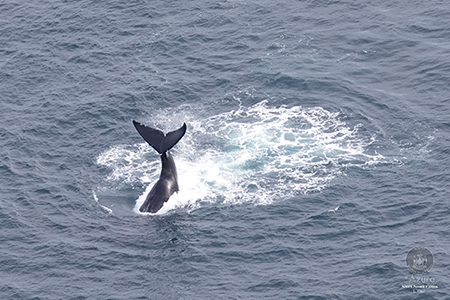
L. Blair, Azura Consulting
With funding from the Consolidated Appropriations Act, DMR has significantly expanded North Atlantic right whale (NARW) monitoring in the Gulf of Maine (GOM). The GOM, particularly in waters off the coast of Maine, has been an under-sampled and under-researched area, resulting in high uncertainty in existing models that determine risk of serious injury and mortality to NARWs by lobster gear. It is this uncertainty that has driven NOAA to make assumptions that have been so problematic for Maine's lobster industry.
The Maine Department of Marine Resources aims to address critical data gaps regarding the presence of NARWs in the GOM with passive acoustic monitoring, visual surveys by boat and plane, and zooplankton monitoring.
Use the links below for information on each program.